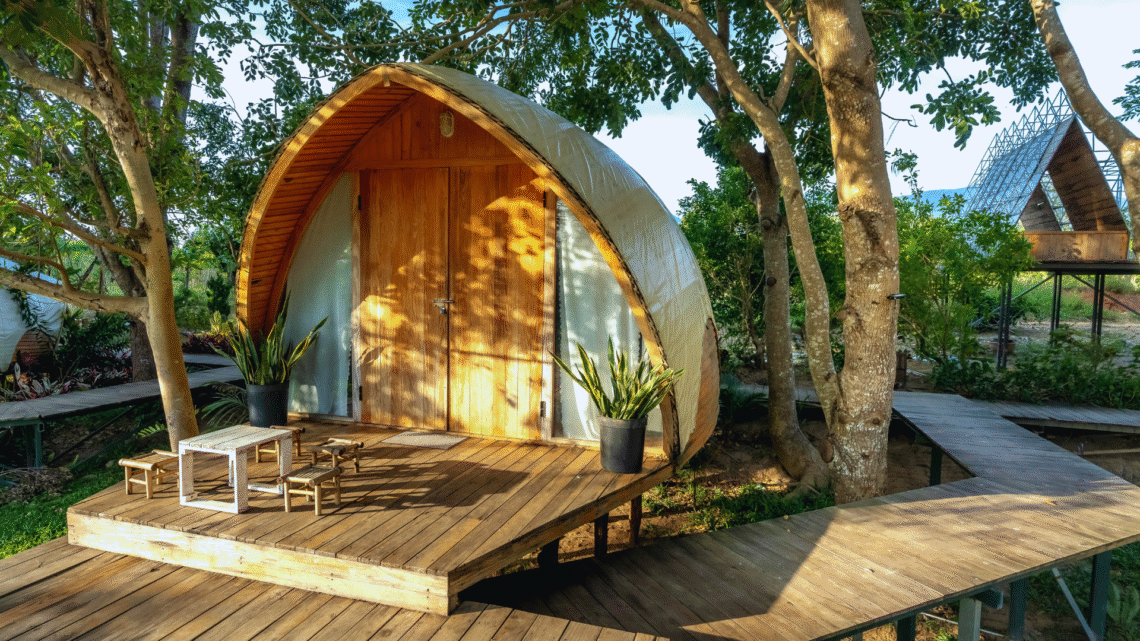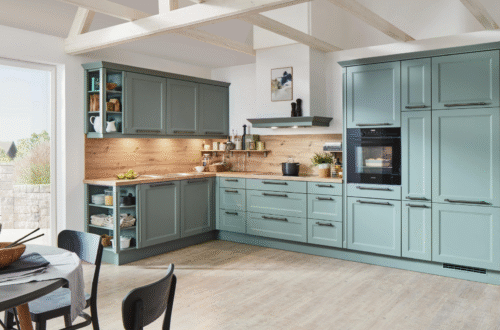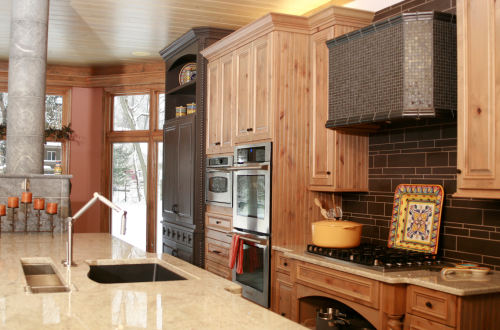
Eco-Friendly Home Design Ideas for a Sustainable Lifestyle: Create Your Green Sanctuary
Creating an eco-friendly home not only enhances personal well-being but also contributes positively to the environment. Incorporating sustainable materials, energy-efficient appliances, and thoughtful design choices can significantly reduce a household’s carbon footprint. These elements are essential for anyone looking to embrace a more sustainable lifestyle.
Many individuals are unaware of the myriad options available for creating an environmentally conscious living space. From utilising reclaimed wood to choosing low-VOC paints, the possibilities are extensive and impactful. Alongside aesthetic appeal, these choices foster a healthier indoor climate and promote sustainability.
Exploring eco-friendly home design can be an inspiring journey. Emphasising preference for renewable resources and efficient layouts not only aids the planet but also offers a functional and stylish home. Readers will discover practical ideas that can easily be implemented in their own living spaces.
Fundamentals of Eco-Friendly Home Design
Eco-friendly home design focuses on sustainability, the use of sustainable materials, and the avoidance of toxic chemicals. These fundamentals can greatly influence the environmental impact of a home and promote a healthier living space.
Principles of Sustainability
Sustainability in home design encompasses reducing energy consumption, utilising renewable resources, and promoting biodiversity. Key practices include incorporating energy-efficient appliances and installing solar panels to harness renewable energy.
Water conservation is another crucial principle; using rainwater harvesting systems and low-flow fixtures can significantly reduce water usage.
Additionally, maintaining a balance with the natural environment is essential. Incorporating native plants into landscaping can help sustain local ecosystems while reducing the need for chemical pesticides.
Selecting Sustainable Materials
Choosing sustainable materials is vital for minimising environmental impact. These materials should come from renewable resources and have a low carbon footprint. Examples include bamboo, reclaimed wood, and recycled metal.
The lifespan of materials is also crucial; they should be durable to reduce the need for replacements.
Look for certifications like FSC (Forest Stewardship Council) for wood products or the Cradle to Cradle certification for other materials. These ensure that resources have been sourced sustainably and responsibly, enhancing the overall sustainability of the home.
Avoiding Toxic Chemicals
Avoiding toxic chemicals is important for both health and well-being. Many conventional building materials contain harmful substances that can off-gas into the home environment.
Opt for paints, varnishes, and finishes that are low in volatile organic compounds (VOCs).
Using natural insulation materials, such as sheep’s wool or cellulose, can also minimise exposure to harmful chemicals. Furthermore, furnishings should be evaluated for their chemical content, ensuring they meet safety standards and support a healthier indoor air quality.
Incorporating Sustainable Materials and Features
Using sustainable materials and features in home design significantly contributes to environmental conservation. The choice of materials impacts energy efficiency, waste reduction, and the overall carbon footprint.
Natural Materials in Home Design
Natural materials play a vital role in promoting sustainability. These include materials such as stone, clay, and natural fibres. They offer durability and an aesthetic warmth that artificial materials often lack.
Materials like hemp, wool, and cotton for textiles are biodegradable and require fewer chemicals for production. Stone surfaces are not only long-lasting but also provide excellent thermal mass, which can regulate indoor temperatures effectively.
Incorporating these materials results in healthier indoor air quality, reducing the likelihood of toxic off-gassing. Choosing finishes like low-VOC paints enhances the benefits offered by natural materials.
Bamboo and Reclaimed Wood Applications
Bamboo is a rapidly renewable resource known for its strength and versatility. It can be used for flooring, cabinetry, and even furniture. Its growth rate makes it an ideal choice for eco-friendly designs.
Reclaimed wood, sourced from old buildings or furniture, brings character to home interiors while reducing the demand for new timber. It minimises waste and often comes with a history that adds charm to the home.
Using these materials not only supports sustainability but also encourages creative design choices. They can be stained or treated to achieve various finishes that complement any style.
Sourcing from Local Artisans
Sourcing materials from local artisans strengthens community ties while supporting sustainable practices. Local artisans often prioritise the use of sustainable materials and environmentally friendly production methods.
Buying locally reduces transportation emissions and supports local economies. Artisans can provide bespoke solutions tailored to specific needs, ensuring unique design elements.
Collaborating with local craftsmen allows homeowners to invest in one-of-a-kind pieces. This practice not only enhances the home’s aesthetic but also reinforces the values of sustainability and community support.
Energy Efficiency and Smart Technology
Integrating energy efficiency and smart technology in home design significantly reduces environmental impact and lowers utility costs. By focusing on natural light, LED lighting, smart thermostats, and energy-efficient appliances, homeowners can create a sustainable living space.
Maximising Natural Light
Maximising natural light involves strategic design choices that enhance daylight infiltration. Larger windows, skylights, and open floor plans allow sunlight to permeate living areas, reducing reliance on artificial lighting.
Consider using reflective surfaces in interior design to amplify natural light. Mirrors and light-coloured walls can redirect sunlight, brightening up spaces. Window treatments like sheer curtains can also filter light without blocking it entirely, keeping rooms illuminated and lively.
Positioning windows to capture sunlight throughout the day optimises energy use. This approach not only enhances comfort but also creates a pleasant atmosphere, resulting in reduced reliance on electrical lighting.
Beyond merely optimizing light, the structural integrity and thermal performance of windows are paramount for true energy efficiency and long-term home resilience. High-quality window installations can significantly reduce heat transfer, keeping interiors cooler in summer and warmer in winter, thereby lowering utility bills. For homeowners in regions prone to severe weather, investing in robust solutions becomes even more critical.
For instance, hurricane impact windows in Tampa offer a dual benefit, providing superior insulation against temperature fluctuations while also delivering essential protection against powerful storms. This ensures both a comfortable indoor climate and peace of mind, making them a wise, sustainable choice for any home.
Choosing a builder that integrates high-performance windows into a wider energy strategy makes those gains achievable from day one. Regional homebuilders experienced in energy-efficient construction also ensure that open layouts and durable materials work together to optimise daylighting and thermal comfort.
For readers exploring new-build options in Delaware, local firms such as Handler Homes often specialise in energy-conscious single-family homes and townhomes with customizable plans and community-focused neighbourhoods. Visiting a model or quick-move-in home can help buyers evaluate daylight, insulation, and flow in person before committing to upgrades.
LED Lighting Solutions
LED lighting presents a significant upgrade over traditional incandescent bulbs. They use up to 80% less energy, providing substantial savings on electricity bills. Additionally, LED bulbs have a longer lifespan, lasting up to 25,000 hours compared to about 1,000 hours for conventional bulbs.
LEDs emit less heat, making them safer and more efficient. They come in a variety of colours and styles, suitable for various applications, from ambient to task lighting. Dimmer switches can be combined with LED lighting to further optimise energy consumption.
Benefits also extend to smart bulbs, which can be controlled remotely. This feature enables users to adjust lighting based on occupancy or time of day, ensuring efficient usage and further enhancing energy savings.
Implementing Smart Thermostats
Smart thermostats allow homeowners to better regulate their heating and cooling systems. They learn user habits, adjusting temperatures automatically for optimal comfort and efficiency. This adaptability can lead to savings of up to 10-15% on heating and cooling costs.
User-friendly interfaces, often controllable via smartphone apps, make it easy to monitor and adjust settings. Many smart thermostats can also integrate with other smart devices, enabling comprehensive energy management across the home.
Utilising features like geofencing allows the system to adjust temperatures based on whether occupants are home or away. This improves energy efficiency without sacrificing comfort.
Choosing Energy-Efficient Appliances
Energy-efficient appliances play a crucial role in reducing home energy consumption. Look for products with the Energy Star label, which indicates that they meet strict efficiency standards. These appliances use less energy and water, resulting in significant savings over time.
Common energy-efficient appliances include refrigerators, washing machines, and dishwashers. Many of these models offer advanced features, such as load sensors, which adjust water and energy use based on the size of the load.
Investing in energy-efficient appliances can also enhance home value and appeal to environmentally conscious buyers. Transitioning to modern appliances contributes to a sustainable lifestyle, reducing both environmental impact and household expenses.
Interior Design for a Sustainable Lifestyle
Creating an eco-friendly interior involves implementing strategies that prioritise sustainability and maximise resource efficiency. This can include the selection of materials, décor choices, and innovative design techniques that promote a responsible lifestyle.
Eco-Conscious Design Strategies
Sustainable interior design requires a focus on materials and energy efficiency. Designers often choose products made from renewable resources, like bamboo, cork, or recycled metals. Many homeowners tend to be seeking interior design & renovation solutions that integrate these sustainable choices into both new builds and remodels, ensuring that eco-friendly principles are applied at every stage of the project.
In order to facilitate such changes, factors like incorporating natural light are essential. Strategically placed windows or skylights can reduce the need for artificial lighting, leading to lower energy consumption.
Energy-efficient appliances also play a significant role. Selecting high-rated appliances can decrease energy use while enhancing functionality.
On the other hand, investing in renewable energy solutions can also provide long-term savings while further reducing a home’s environmental impact. For instance, solar panel installation houston (or in one’s relevant locality) can lower electricity bills, increase energy independence, and complement other sustainable design strategies throughout the home. Similarly, incorporating a green roof or rooftop garden can improve insulation, manage rainwater, and enhance biodiversity, further supporting an eco-friendly and energy-efficient home.
Lastly, choosing non-toxic paints and finishes reduces indoor air pollution, contributing to a healthier living environment. Opting for furniture made from sustainable materials not only supports eco-friendly practices but also adds unique character to spaces.
Recycling and Repurposing in Interiors
Recycling in interior design can create stunning aesthetics while contributing to sustainability. For example, reclaimed wood can be transformed into unique furniture pieces or decorative accents.
Repurposing items helps reduce waste. Old doors can become headboards, while vintage suitcases can serve as stylish storage solutions.
Incorporating upcycled textiles for cushions or curtains is another effective method. This practice reduces textile waste and introduces individuality into design.
In addition, local sourcing of materials minimises carbon footprints associated with transportation. Supporting local artisans can lead to distinctive features within interiors, fostering a connection to the surrounding community.
Through strategic decisions and creative thinking, recycling and repurposing can significantly enhance a home’s eco-friendliness.





